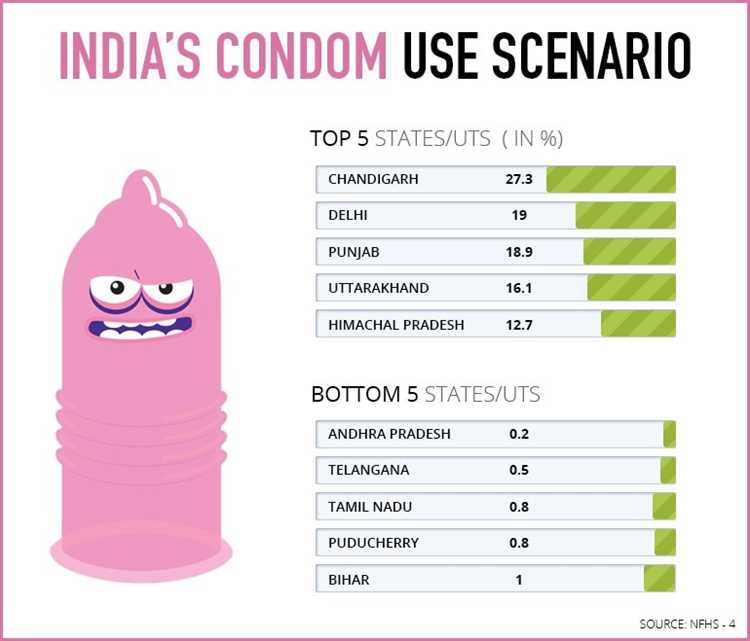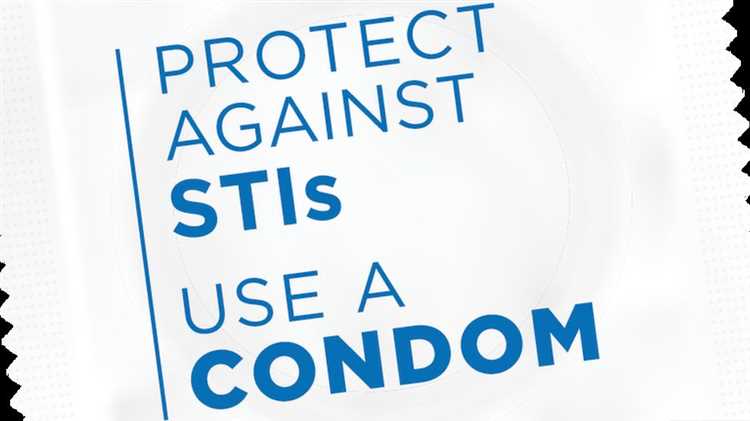
Introduction:
Condoms are one of the most effective methods of contraception and play a crucial role in preventing the transmission of sexually transmitted infections (STIs). Despite their proven efficacy, many individuals still choose to avoid using condoms. Understanding the reasons behind this reluctance is essential in order to promote safer sexual practices and improve public health.
1. Lack of Pleasure:
One common barrier to condom use is the concern that it may diminish sexual pleasure. Some individuals believe that condoms decrease sensitivity and interfere with intimacy, leading them to opt for alternative methods of contraception. However, it is important to note that with the advancements in condom technology, there are numerous options available that provide enhanced pleasure while still offering protection against STIs and unwanted pregnancies.
2. Perception of Trust:
Another reason people avoid using condoms is a perception of trust in their partner. If individuals believe that their partner is monogamous or do not suspect that their partner may be carrying an STI, they may choose to forgo condom use. However, it is essential to recognize that STIs can be asymptomatic and that trust alone cannot guarantee protection against infection. Open and honest communication about sexual health with one’s partner is crucial to ensure both parties’ well-being.
3. Lack of Knowledge and Education:
Many individuals also avoid using condoms due to a lack of knowledge and education about their importance. This can occur due to inadequate sexual education in schools or cultural stigma surrounding conversations about sexual health. By promoting comprehensive sexual education and addressing misconceptions about condoms, individuals can make informed decisions and understand the importance of condom use in preventing STIs and unwanted pregnancies.
4. Contraceptive Myths:
The prevalence of contraceptive myths and misinformation can also contribute to the avoidance of condoms. Some individuals may believe that other contraceptive methods, such as hormonal birth control or withdrawal, provide sufficient protection against STIs, leading them to neglect condom use. It is crucial to dispel these myths and emphasize that condoms offer the most effective protection against STIs when used consistently and correctly.
Conclusion:
In order to promote safer sexual practices, it is crucial to understand the common barriers that prevent individuals from using condoms. By addressing concerns about pleasure, promoting trust with open communication, increasing knowledge and education, and dispelling contraceptive myths, we can encourage the widespread adoption of condoms as an essential tool in preventing the transmission of STIs and promoting overall sexual well-being.
- Exploring the reasons why people avoid using condoms
- Lack of pleasure
- Perceived inconvenience
- Lack of education about condom use and effectiveness
- Misconceptions about condom use
- Cultural and religious beliefs
- Fear of reduced pleasure or intimacy
- Embarrassment or stigma associated with condom use
- Effects on condom use:
- Addressing the issue:
- Availability and cost of condoms
- Q&A:
- Are condoms 100% effective in preventing pregnancy and sexually transmitted infections (STIs)?
- Do condoms decrease sexual pleasure?
- What are some common reasons why people avoid using condoms?
- Are there any alternative methods of contraception that can be used instead of condoms?
- How can one address the barriers to condom use?
Exploring the reasons why people avoid using condoms
Condoms are one of the most effective methods of contraception and protection against sexually transmitted infections. However, many people choose to avoid using condoms for various reasons, which can have significant implications for their sexual health and well-being. In this section, we will explore some of the common barriers that people face when it comes to using condoms.
Lack of pleasure
One of the main reasons why people avoid using condoms is the belief that it reduces sexual pleasure. Some individuals perceive condoms as a barrier that inhibits physical intimacy and diminishes the sensation during sexual activity. This perception can result in a reluctance to use condoms, especially among those who prioritize pleasure over the potential risks of unprotected sex.
Perceived inconvenience
Another common barrier to condom use is the perceived inconvenience associated with their use. Some people find the process of opening and correctly applying a condom to be an interruption in the heat of the moment. Additionally, the need to always have condoms readily available can be seen as a hassle, particularly for those who engage in spontaneous sexual encounters. This perception of inconvenience may discourage individuals from using condoms consistently.
It is important to emphasize that condom use should be viewed as an essential part of responsible sexual behavior. While there are barriers to condom use, it is crucial to address and overcome these barriers to ensure the overall well-being and sexual health of individuals. Education, open communication, and debunking misconceptions about condoms can go a long way in promoting consistent and correct condom use.
Lack of education about condom use and effectiveness
One common barrier to condom use is a lack of education about how to properly use condoms and their effectiveness in preventing sexually transmitted infections (STIs) and unintended pregnancies. Many individuals may not have received comprehensive sexual education that covers condom use, or they may have received misinformation or inadequate information about condoms.
Without proper education, people may not understand the importance of using condoms consistently and correctly during sexual activity. They may be unaware of the potential risks associated with not using condoms, such as the transmission of STIs or unintended pregnancies.
In addition, misconceptions about condom effectiveness or reliability can also contribute to people avoiding condom use. Some individuals may believe that condoms are not as effective as other forms of contraception, or they may have heard myths about condom failure rates. These misconceptions can create a perception that using condoms is unnecessary or ineffective, leading individuals to choose not to use them.
To address this barrier, it is crucial to improve access to comprehensive sexual education that includes accurate and detailed information about condom use. Such education should cover topics like how to properly put on and remove condoms, the importance of using condoms consistently and correctly, and the effectiveness of condoms in preventing STIs and unintended pregnancies.
Furthermore, efforts should be made to debunk myths and provide accurate information about condom effectiveness. This can be done through targeted educational campaigns, community outreach, and healthcare professionals providing clear and factual information to individuals seeking guidance.
By improving education about condom use and effectiveness, more people can make informed decisions and choose to use condoms, thereby reducing the barriers that currently prevent their widespread use.
Misconceptions about condom use

Despite their proven effectiveness in preventing the transmission of sexually transmitted infections (STIs) and unwanted pregnancies, there are several misconceptions about condom use that can discourage people from using them. These misconceptions stem from a lack of accurate information and can lead to potential risks for individuals and their partners.
| Myth | Reality |
|---|---|
| Condoms decrease sexual pleasure. | While some individuals may initially find using condoms unfamiliar or less pleasurable, with proper use, condoms should not significantly decrease sexual pleasure. In fact, using condoms can enhance sexual satisfaction by providing peace of mind and reducing anxiety about STI and pregnancy risks. |
| Condoms are only for preventing pregnancy. | While condoms are an effective method for preventing unwanted pregnancies, they are also highly effective in reducing the risk of STI transmission. Condoms create a barrier that prevents direct contact between bodily fluids, including semen, vaginal fluids, and blood, reducing the risk of STI transmission. |
| Condoms are not necessary if both partners are monogamous. | Even in monogamous relationships, it is essential to use condoms consistently to prevent STIs. People can unknowingly carry and transmit STIs without showing any symptoms. Regular use of condoms can help protect both partners from STIs and provide additional peace of mind. |
| Condoms always break or slip off during sex. | When used correctly, condoms rarely break or slip off. Breakage or slippage usually occur due to user error, such as not leaving enough space at the tip for semen or using expired condoms. Checking the expiration date, storing condoms properly, and using adequate lubrication can help prevent these issues. |
| Using two condoms provides double protection. | Using two condoms simultaneously can actually increase the risk of breakage due to friction between them. It is recommended to use a single condom correctly, paired with adequate water-based lubrication, for optimal protection against STIs and unwanted pregnancies. |
Addressing these misconceptions and providing accurate information about condom use is essential to promoting their proper and consistent use. Education, accessibility, and destigmatization of condom use can help overcome these barriers and encourage individuals to make informed decisions regarding their sexual health.
Cultural and religious beliefs

Cultural and religious beliefs play a significant role in shaping people’s attitudes towards condom use. In many cultures, there is a strong emphasis on abstinence before marriage and fidelity within marriage. This can lead to a negative perception of condom use, as it may be seen as promoting promiscuity or distrust within relationships.
Religious teachings often influence individuals’ views on condom use. Some religions consider sex to be a sacred act that should only occur within the confines of marriage, and any form of contraception, including condoms, may be discouraged or even forbidden. These beliefs can deter individuals from using condoms, as they may fear going against their religious teachings.
Additionally, certain cultural and religious beliefs may view condom use as a taboo subject or bring shame and embarrassment to individuals. This stigma can prevent people from openly discussing or seeking information about condoms, leading to a lack of knowledge and understanding about their importance in preventing sexually transmitted infections (STIs) and unintended pregnancies.
Moreover, cultural and religious norms can prioritize the desire for larger families, and the use of condoms may be seen as interfering with this goal. The fear of being perceived as irresponsible or selfish for limiting the number of children can cause individuals to avoid using condoms as a method of contraception.
- In some cultures, condom use may also be associated with Western influences or perceived as contrary to traditional values. This can lead to resistance or rejection of condom use, as individuals may prioritize adherence to their cultural norms and traditions.
- Gender dynamics and power imbalances within relationships can also impact condom use. In certain cultures, men may be resistant to using condoms, as they perceive it as a sign of weakness or an infringement upon their masculinity. Women, on the other hand, may face difficulty negotiating condom use due to cultural and societal expectations.
Overall, cultural and religious beliefs play a significant role in influencing individuals’ attitudes towards condom use. Addressing these barriers requires culturally sensitive and tailored strategies that respect individuals’ beliefs while also providing accurate information about the importance of condom use in preventing STIs and unintended pregnancies.
Fear of reduced pleasure or intimacy
One common barrier to using condoms is the fear that they may reduce pleasure or intimacy during sexual activity. Some individuals believe that condoms can dull sensations or contribute to decreased sensitivity, resulting in a less enjoyable experience.
However, it is important to note that modern condom technology is continuously evolving, and there are various types and styles of condoms available in the market. Many condoms today are designed to provide a natural feeling and maximize pleasure while still offering protection against sexually transmitted infections (STIs) and unintended pregnancies.
Moreover, practicing safe sex by using condoms can actually enhance intimacy in a relationship. By using condoms, partners can openly communicate about their sexual health and take responsibility for protecting themselves and each other. This level of trust and consideration can foster a deeper emotional connection and strengthen the bond between partners.
It is essential to address the fear of reduced pleasure or intimacy by having open and honest conversations about sexual preferences and concerns with a partner. By exploring different types of condoms together and finding the one that works best for both individuals, couples can ensure a pleasurable and safe sexual experience.
Remember, using condoms is a responsible choice that prioritizes both pleasure and protection.
Embarrassment or stigma associated with condom use

One common barrier to using condoms is the feeling of embarrassment or the stigma associated with condom use. This can stem from various societal, cultural, or personal beliefs that view condom use as taboo or inappropriate. Some individuals may feel ashamed or embarrassed to buy condoms, discuss condom use with partners, or carry condoms with them.
The embarrassment or stigma surrounding condom use can also be influenced by gender norms and expectations. In some cultures, condom use may be seen as a sign of promiscuity or a lack of trust in a relationship. This can create a sense of shame or guilt for individuals who want to prioritize their sexual health but fear being judged by others.
Additionally, the portrayal of condom use in media and popular culture can contribute to the stigma. Condom use is often associated with casual sex or promiscuity, perpetuating negative stereotypes and judgments. This can make individuals hesitant to use condoms as they may worry about being judged or labeled in a negative way.
Effects on condom use:
The embarrassment or stigma associated with condom use can have significant effects on individuals and their decision to use condoms. When individuals feel ashamed or embarrassed, they may be less likely to prioritize their sexual health and engage in unprotected sex. This can increase the risk of sexually transmitted infections (STIs) and unplanned pregnancies.
The stigma surrounding condom use can also create barriers in relationships. If one partner feels embarrassed or uncomfortable discussing condom use, it may be difficult to have open and honest conversations about sexual health. This can lead to misunderstandings, decreased trust, and an increased likelihood of unprotected intercourse.
Addressing the issue:
To overcome the embarrassment or stigma associated with condom use, it is essential to promote open and honest conversations about sexual health. Health education programs should focus on debunking myths and misconceptions about condoms and emphasizing the importance of condom use in preventing STIs and unintended pregnancies.
It is also important to challenge societal and cultural norms that perpetuate the stigma surrounding condom use. This can be done through awareness campaigns, media representation that portrays condom use positively, and advocating for comprehensive sexual education in schools.
| Barriers to Using Condoms |
|---|
| Embarrassment or stigma associated with condom use |
| Lack of pleasure or sensation |
| Perceived reduced intimacy |
| Unavailability or inaccessibility |
| Perceived low risk of STIs or pregnancy |
| Religious or cultural beliefs |
Availability and cost of condoms
The availability and cost of condoms can present significant barriers to their use. In many countries, access to condoms is limited, particularly in rural areas or areas with limited healthcare infrastructure. This lack of availability can make it difficult for individuals to obtain condoms when they need them, leading to a higher likelihood of engaging in unprotected sex.
Additionally, the cost of condoms can be a deterrent for many people. While condoms are generally affordable, there are individuals who may struggle to afford them on a regular basis. This can be especially true for marginalized populations or individuals with low incomes. The cost of condoms can add up over time, making it a financial burden for some individuals.
Furthermore, the lack of availability of condoms in certain settings can contribute to their underutilization. For example, schools or universities may not provide easy access to condoms, which can deter young people from using them. Similarly, some healthcare facilities may not have condoms readily available, which can prevent individuals from obtaining them during routine visits.
To address the barriers related to availability and cost, it is important to increase access to affordable condoms. This can be achieved through various strategies, such as distributing free condoms in high-risk areas or implementing subsidy programs for low-income individuals. Additionally, educational campaigns can help raise awareness about the importance of condom use and provide information on where to access them.
By ensuring that condoms are readily available and affordable, individuals are more likely to use them consistently, thereby reducing the risk of sexually transmitted infections and unplanned pregnancies.
Q&A:
Are condoms 100% effective in preventing pregnancy and sexually transmitted infections (STIs)?
No, condoms are not 100% effective in preventing pregnancy and STIs. While they greatly reduce the risk, there is still a small chance of pregnancy or STI transmission.
Do condoms decrease sexual pleasure?
Some people may feel that condoms decrease sexual pleasure due to the barrier they create. However, it is important to prioritize both sexual pleasure and protection. There are different types and brands of condoms available, so it may be beneficial to explore options that provide both protection and comfort.
What are some common reasons why people avoid using condoms?
Some common reasons why people avoid using condoms include a perception that they decrease sexual pleasure, lack of education about their importance, cultural or religious beliefs, embarrassment or discomfort in discussing condom use with partners, and misconceptions or myths about their effectiveness.
Are there any alternative methods of contraception that can be used instead of condoms?
Yes, there are alternative methods of contraception that can be used instead of condoms. These include hormonal methods like birth control pills, patches, or injections, intrauterine devices (IUDs), and sterilization. However, it is important to consult with a healthcare professional to determine the most suitable method for an individual’s needs and to remember that many of these methods do not protect against STIs.
How can one address the barriers to condom use?
Addressing the barriers to condom use requires a multi-faceted approach. It is important to educate oneself about the benefits of condom use in preventing both pregnancy and STIs. Communication with sexual partners is key, as discussing condom use can help alleviate any discomfort or embarrassment. Access to affordable and high-quality condoms is also important, as well as dispelling any misconceptions or myths surrounding their effectiveness. Lastly, exploring alternative methods of contraception or finding condoms that provide both protection and comfort can help promote consistent condom use.